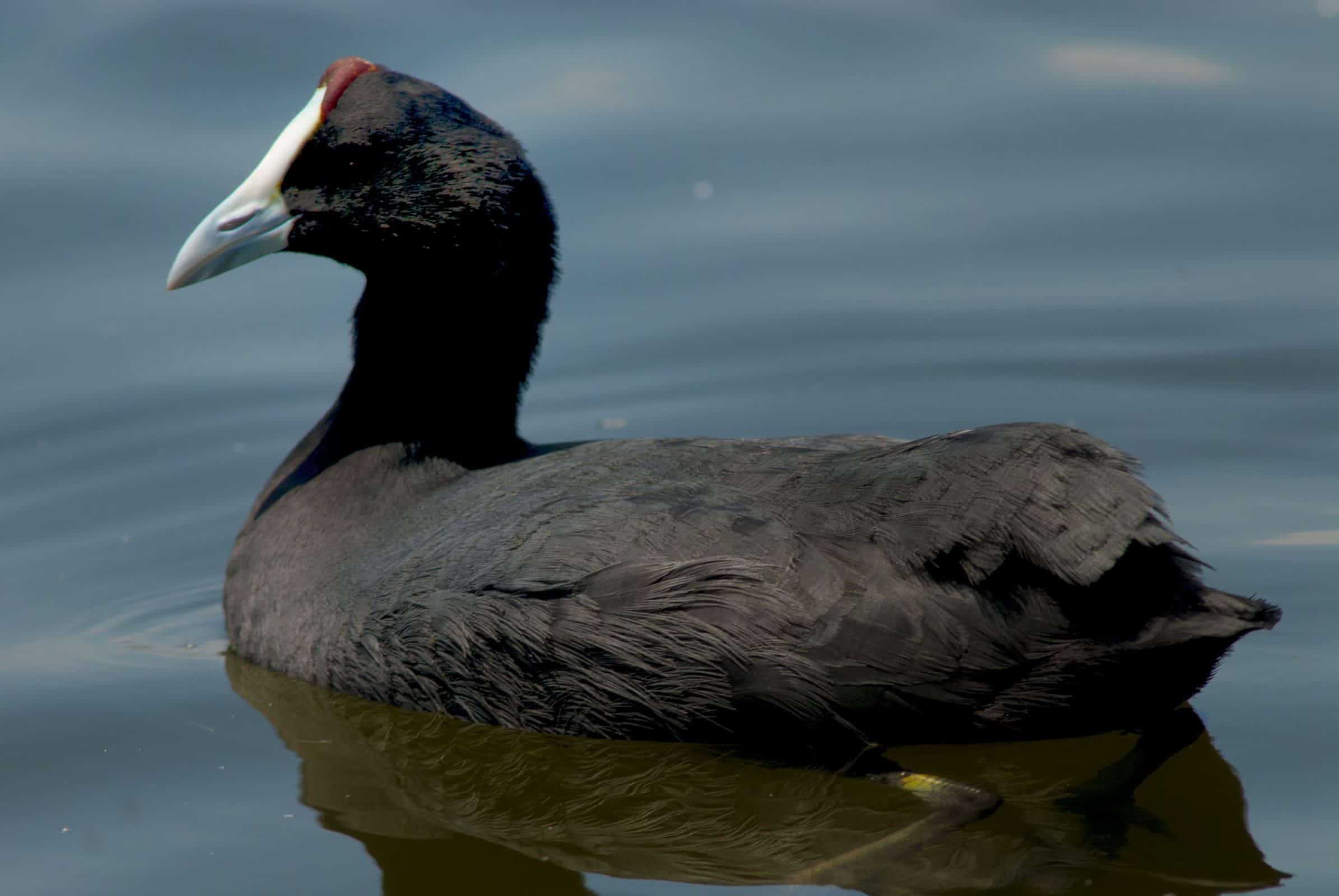Very similar to the Eurasian Coot, so much so that they can be confused from a distance and in winter, since positive identification is carried out thanks to a pair of very striking red protuberances on the forehead, these apparent little horns only appear this way during reproduction. Another differentiating factor is the frontal shield, an area of the forehead, which is narrow and ends in a bluish-white cusp, while in case of the Eurasian coot it is white, wider and has a feathered wedge that tends to separate the shield from the beak. The silhouette of the neck and head also helps to identify them, while the Eurasian coot’s is rounded and more reminiscent of the upper part of the letter “s”, the Red-knobbed coot’s is straighter and has a more angular finish to it.

Species 1
Red-knobbed coot
Scientific name
Family 2
Taxonomic Affinity Group 3
Phenology 4
It is a very rare species, it is possible that they have gone unnoticed among the flocks of common coots, particularly in winter. At the end of the 20th century, it was only sighted exceptionally, at the end of the 20th century and beginning of the 21st century, there was a release of individuals as part of a conservation program, giving rise to a small population that is now extinct. The few sightings we have of the species were during the postnuptial migratory passage.
The graph represents the probability of seeing a species during the year, grouped into months. The vertical axis indicates the percentage value. Each of the bars expresses its value. The horizontal axis represents the months: I = January, II = February, III = March, IV = April, V = May, VI = June, VII = July, VIII = August, IX = September, X = October, XI = November and XII = December.
Observation recommendations
It is a challenge to spot the species, it reproduced in ‘La Gravera’, and later observed in the ‘Salinas Viejas’ and ‘Salinas Nuevas’, mixed in both places with Eurasian coot.
Observation areas where we can find it
Notes
[1] The names used are from the list of birds of Spain, drawn up by SEO/BirdLife and updated to 2019 (https://seo.org/listaavesdeespana/). The reference is: Rouco, M., Copete, J. L., De Juana, E., Gil-Velasco, M., Lorenzo, J. A., Martín, M., Milá, B., Molina, B. & Santos, D. M. 2019. Checklist of the birds of Spain. 2019 edition. SEO/BirdLife. Madrid.
[2] The taxonomic family to which it belongs is indicated.
[3] Traditionally, waterbirds have been grouped according to their taxonomy or “taxonomic affinity”, i.e., when some birds coincide in certain features that allow them to be classified scientifically, but without leaving the rigour of science, they are put together in these groups so that they can be easily recognised. These groups are the following: Greves (belonging to the Podicipedae family), Herons and Similar (includes the families: Ardeidae -Herons- Ciconiidae -Storks- and Threskiornithidae -Ibises and spoonbills-), Ducks (the whole Anatidae family), Coots and Similar (the family Rallidae corresponding to Rails, Gallinules and Coots), Cranes (also with only one family, the Gruidae), Waders , a heterogeneous group, the most diverse of this classification, includes the families Burhinidae (Stone-curlews), Haematopodidae (Oystercather), Recurvirostridade (Avocets and Stilts), Glareolidae (Pranticole), Charadriidadea (Plovers), Scolapacidae and finally Gulls and Similar (the recently unified family Laridae, i.e. Gulls and Terns).
[4] Phenology studies the relationship between the cycles of living beings and meteorological factors, and in our latitude these factors manifest themselves as variations throughout the year, thus relating the seasons to the birds’ cycles (breeding, migratory journeys, etc.) The graph shows the probability of seeing a bird depending on the month. It uses data from 48 bird censuses carried out between October 2016 and September 2018. The method used is that of a census route with sampling stations, with a total count on the sheet of water.
